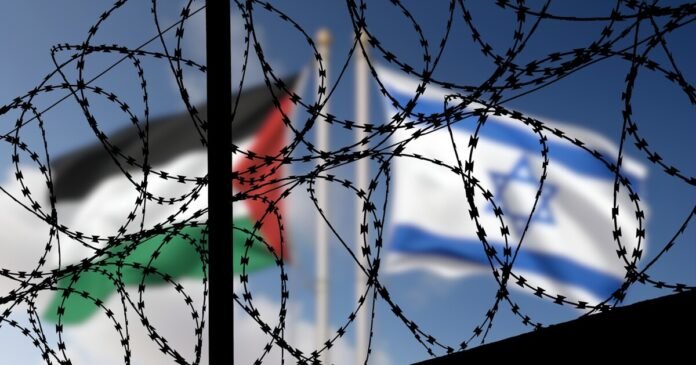The Current State of the Conflict
The Israeli-Palestinian conflict has undergone significant escalation since the Hamas attacks on October 7, 2023. This violent outbreak marks a pivotal moment in the enduring struggle between these two communities. The ramifications of these hostilities have not only intensified the local strife but have also exacerbated the humanitarian crisis in Gaza. As violence persists, civilians are increasingly trapped amidst a dire situation characterized by limited access to basic necessities such as food, water, and medical supplies. The extent of damage to infrastructure compounds the suffering, rendering effective humanitarian aid elusive.
International organizations have reported alarming conditions, emphasizing the urgent need for humanitarian access to Gazan civilians. Many families are now displaced, seeking refuge amidst the rubble of their homes. The ongoing blockade further complicates efforts to deliver aid, as entry points remain tightly controlled. Reports indicate that the health system is on the brink of collapse, and medical facilities are overwhelmed with casualties, requiring immediate support from global partners. Civilians continue to bear the brunt of governmental and militant actions, highlighting the critical need for solutions that prioritize human rights and dignity.
The implications of this violence ripple beyond the borders of Israel and Palestine, threatening regional stability. Regional actors have previously shown extensive involvement in this conflict, and the current escalation raises concerns about the potential for spillover into neighboring territories. Growing tensions may inspire involvement from other entities, which could lead to an expanded conflict with unpredictable consequences. It is essential that the international community recognizes the urgency of the situation, pushing for resolutions that support both peace and humanitarian relief to mitigate the extensive fallout of this long-standing conflict.
Challenges Facing the Two-State Solution
The quest for a viable two-state solution in the Israeli-Palestinian conflict is fraught with significant challenges that hinder progress toward lasting peace. One of the most pressing issues is the ongoing expansion of Israeli settlements in the West Bank. These settlements not only encroach on land earmarked for a future Palestinian state but also exacerbate tensions between the two communities. The construction of new homes and infrastructure disrupts the continuity of Palestinian territories, making it increasingly difficult to envision a contiguous and viable state alongside Israel.
Forced displacements further complicate the situation. Many Palestinians are displaced from their homes due to settlement expansion or military actions, contributing to a climate of insecurity and resentment. This displacement not only undermines the fabric of Palestinian society but also poses moral and legal questions concerning the treatment of populations under occupation. The continuous violation of international law, including the Fourth Geneva Convention, serves as both a tactic of state-building and a barrier to negotiations; such violations challenge the legitimacy of the Israeli government’s actions and lead to heightened international scrutiny.
Moreover, the internal struggles of the Palestinian Authority (PA) significantly impact the viability of the two-state solution. Economic downgrades and political pressures have rendered the PA increasingly ineffective, limiting its ability to act as a credible partner in negotiations. A stagnant economy, exacerbated by restrictions imposed by the Israeli occupation, has led to widespread dissatisfaction among Palestinians. This pervasive discontent undermines the PA’s political legitimacy, making it difficult for them to gain the necessary support to engage in meaningful dialogue. As external calls for peace intensify, the internal fragility of the PA remains a critical factor that must be addressed to revitalize the two-state momentum.
International Community’s Role and Responsibilities
The Israeli-Palestinian conflict presents a complex challenge that requires active involvement from the international community, particularly the United Nations (UN) and the Security Council. The responsibility of these bodies extends beyond mere observation; they must engage in concerted diplomatic efforts to facilitate a resolution that honors the rights of both Israelis and Palestinians. It is imperative that the international community prioritizes respect for international humanitarian law to ensure the protection of civilians and uphold their rights during conflicts.
Renewing diplomatic initiatives is essential to advance the dialogue toward a just two-state solution, which envisions an independent Palestine alongside Israel. Recent high-level international conferences have aimed to rekindle this conversation, highlighting the critical need for collective action against illegal occupations and violations of international law. Moreover, the international community must bolster support for Palestinian institutions, as their strengthening is vital for sustainable governance and peacebuilding efforts. By empowering these institutions, the global community contributes to creating an environment conducive to negotiations.
Additionally, it is important to recognize the role of influential states and regional organizations in facilitating dialogue. These entities can leverage their diplomatic relationships and resources to advocate for peace and stability. The challenge lies not only in addressing the immediate needs arising from the conflict but also in fostering long-term solutions that address the root causes of discord. To this end, avenues for engagement must be actively pursued, including mediation and conflict resolution mechanisms.
Ultimately, the responsibility of the international community is to foster an environment where meaningful conversations about the Israeli-Palestinian conflict can occur, paving the way for a shared future based on mutual respect and understanding. Collective commitment and consistent action are essential for driving the momentum needed for a viable two-state solution.
A Path Forward: Seizing the Momentum for Peace
Recent international dialogues surrounding the Israeli-Palestinian conflict have provided a renewed impetus for pursuing a two-state solution. This framework is not only a viable option but also essential for establishing peace and stability in the region. To build upon this momentum, a clear political horizon must be defined. This involves setting a timeline for negotiations that addresses key issues such as borders, security arrangements, and the status of Jerusalem. A transparent and defined approach could facilitate a more constructive dialogue, allowing both Israelis and Palestinians to envision their future within recognized state structures.
Another crucial element in moving toward a viable two-state solution is the recognition of statehood by all parties involved. International support, including acknowledgment from key global actors, is vital for providing legitimacy to the aspirations of both nations. This recognition should also extend to the rights of both Israelis and Palestinians, reflecting a mutual understanding that respects national narratives and cultural identities. Formal recognition of statehood is not merely symbolic; it serves as a foundational step that can foster cooperation and build trust between communities.
Moreover, coordinated efforts to halt violence and displacement are imperative for creating the conditions necessary for peace. This includes not only conflict de-escalation measures but also ensuring humanitarian access and support to affected populations. Inaction on these fronts can lead to further grievances and entrench divisions, making reconciliation increasingly difficult. Consequently, dedication to diplomacy, dialogue, and a commitment to uphold the dignity of all individuals affected by the conflict are essential components of any sustainable peace agreement.
Ultimately, seizing this momentum for peace requires collaboration from local leaders, international stakeholders, and grassroots movements alike. By fostering a culture of respect and understanding, the path toward a peaceful coexistence can become a shared journey, enriching the lives of all involved.

